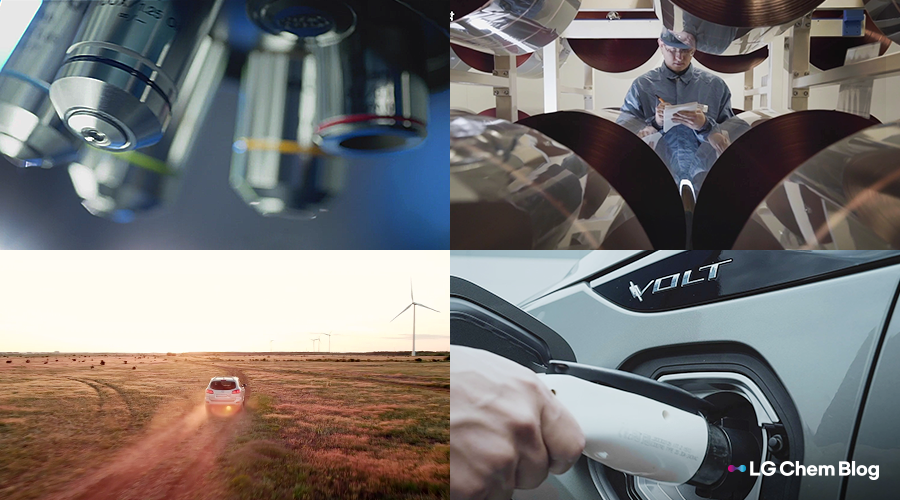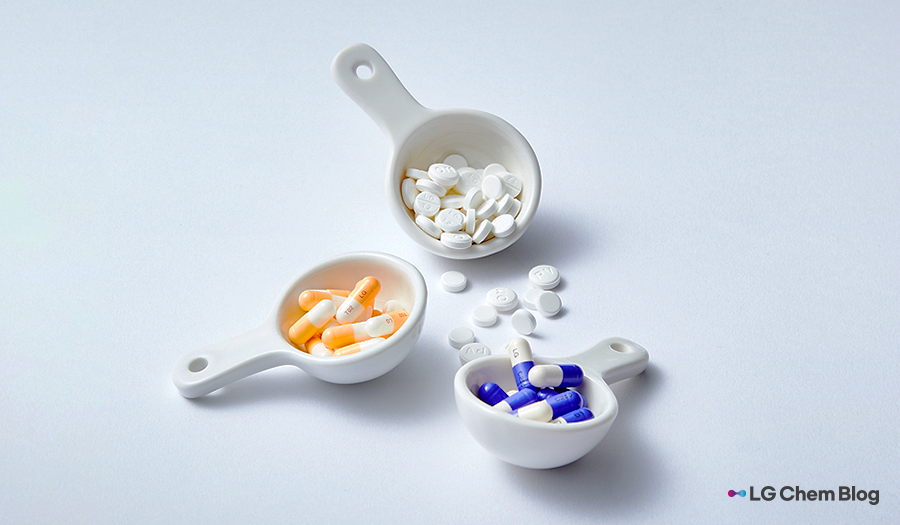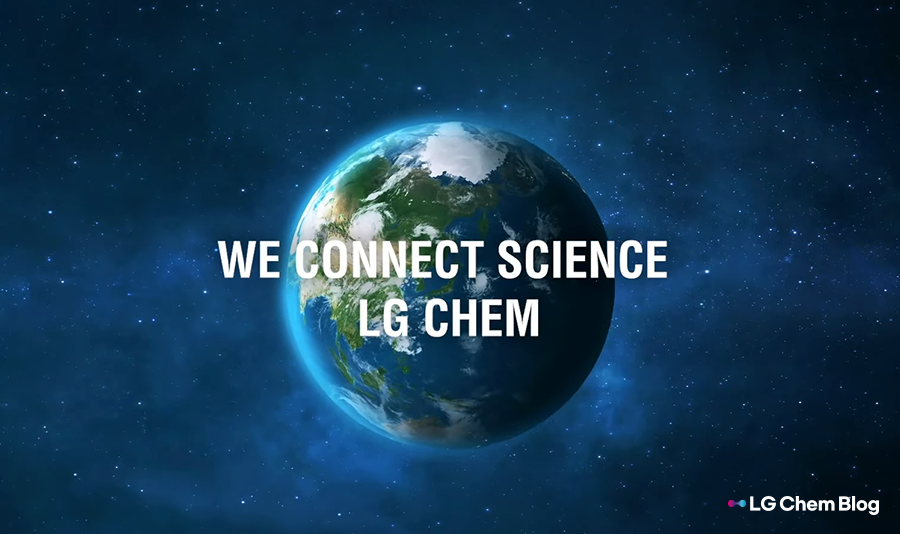Investing in the future! LG Chem invests $7.7 billion in ESG activities and new growth engines
2023. 05. 17
2023. 05. 17
What do you think is the most important part of corporate activities? Is it operating income? Is it revenues? Some might say ESG is even more important. ESG indicates environmental, social, and governance, which are critical elements for the sustainable growth of a company and our society. Acknowledging its utmost importance, LG Chem plans to invest in areas for sustainable growth based on ESG considerations. LG Chem’s CEO, Shin Hak-Cheol, announced a plan to invest about $7.7 billion (KRW 10 trillion) in ESG-based areas for sustainable growth until 2025. Learn more about detailed investment plans of LG Chem.

In 2021, LG Chem introduced three new growth engines along with an investment plan for future growth and stability. They are eco-friendly sustainability initiatives, battery materials for electric vehicles (EVs), and global innovative pharmaceuticals. As companies around the world build ESG-based business models, LG Chem, a global science company, also adopts sustainability as a premise for revenues and operating income. To do so, it is important to consider sustainability throughout all business processes, strategies, investment plans, and systems.

LG Chem unveiled a plan to invest about $2.3 billion (KRW 3 trillion) in sustainable businesses including bio materials, recycled materials, and renewable energy, to foster their petrochemical unit as the center of future growth. As part of this effort, the company launched ‘LETZero’ in July 2021, a master brand for eco-friendly products, taking a step toward a sustainable environment and future. LETZero lineups include products made of recycled plastics, bio materials made of plant-based renewable materials, and compostable products made of glucose and waste glycerol extracted from corns.
Some of these eco-friendly products received ISCC Plus, a highly regarded international eco-friendly certification. LG Chem’s circular balanced SAP (Super Absorbent Polymer)─the world’s first to be used in diapers and sanitary products for water absorption─is now mass produced to be supplied to global clients in the US and Europe.
LG Chem’s compostable high-polymer PBAT (Polybutylene Adipate-co-Terephthalate) is used in agricultural film and disposable film as it quickly decomposes in a reaction to oxygen, heat, and enzyme. The company is actively adopting external technologies to make market forays and strengthen capacities, and planning to start construction of a production facility in 2023.
Anticipating a brisk growth of the market for bio plastics, LG Chem also works with domestic materials companies to procure eco-friendly materials such as bio naphtha and PLA (Poly Lactic Acid) made of plant-based materials such as corns. In 2021, LG Chem and Inner Bottle─a startup for eco-friendly packing solution─established an eco-platform for 100% recycling of plastic cosmetic packaging, and launched a joint project to apply recycled plastics such as PCR ABS (Post Consumer Recycled Acrylonitrile Butadiene Styrene) to cosmetic packaging. LG Chem endeavors to identify new business opportunities in the market for renewable industrial materials such as POE*/EVA* used in solar panels.
*POE (Polyolefin Elastomer): LG Chem’s POE is a copolymer of ethylene and octene or ethylene and butene produced with the company’s proprietary metallocene catalyst. LG Chem’s POE has superior impact resistance, high elasticity, and low thermal sealing temperature.
*EVA (Ethylene Vinyl Acetate): EVA is a copolymer of ethylene and vinyl acetate (VA) monomer. Its elasticity, heat sealing temperature, durability, and permeability vary depending on the content of vinyl acetate monomers. It is used in various areas ranging from photovoltaic sheets for solar energy to shoe soles.

To become the world’s top comprehensive battery materials company, LG Chem plans to invest approximately 4.6 billion (KRW 6 trillion) and broaden their product portfolio to include cathode materials, separators, anode binders, thermal adhesives, and CNTs.
LG Chem fosters their cathode materials business to become the global leader. In November 2022, the company signed an MOU to build a cathode materials facility in Tennessee, U.S., the largest in the country. Specifically, over $3 billion will be invested in the site (1.7 million m2) in Clarksville, Tennessee, to build a facility and secure the capacity to manufacture 120,000 tons of cathode materials per year. For a stable supply of metals needed for cathode materials, LG Chem will work with mining companies as well as companies that have smelting/refining technologies to strengthen competitiveness in metal procurement. The company intensively invests resources in R&D for cathode materials, separators, anode binders, and thermal adhesives to develop differentiated products.
LG Chem also plans to expand CNT* production as the market for battery materials grows briskly. To make forays into the market for cathode conductive additives*, LG Chem will build a fourth CNT plant in Daesan, Korea to produce 3,200 tons of CNTs each year. Once completed, LG Chem’s CNT output capacity will reach 6,100 tons annually, including 1,700 tons from the first and second plants and 1,200 tons from the third plant. After the first CNT plant started operation in 2017 (annual capacity of 500 tons), LG Chem has steadily expanded CNT manufacturing facilities.
*CNT (Carbon Nanotube): A new material that has the same electric and thermal conductivity as copper and diamond and is 100 times stronger than steel.
*Conductive additive: It facilitates flows of electricity and electrons, and is used as an additive in lithium-ion batteries; particularly, it enhances the conductivity of lithium ions in cathode materials made of active materials such as nickel and cobalt, to increase charging and discharging efficiency.

LG Chem’s life sciences division aspires to become a global company that has at least two innovative new drugs by 2030 to expand business in the US and Europe. To this end, the number of pipelines for new drugs has increased from 34 in 2019 to 45 currently, and active R&D efforts and investments are underway.
LG Chem’s life sciences division focuses on developing drugs for four strategic disease groups─diabetes, metabolic diseases, cancer, and autoimmune diseases. The company also plans to increase pipelines for new drugs in a stage of clinical development. To do so, LG Chem established a research center in the US and make continued efforts to secure competent clinical and regulatory specialists.

LG Chem makes continued R&D efforts to create a sustainable solution based on their business knowledge and know-how. Considering sustainability in business activities is not a choice but an obligation, and the company needs to step up related efforts.
LG Chem started out as a petrochemical company, and has evolved into a global science company that includes divisions on advanced materials and life sciences. To maximize growth potential, the company makes systematic investments and fosters strategic businesses to lead the future of LG Chem.

There are no comments yet! Be the first to let us know your thoughts!